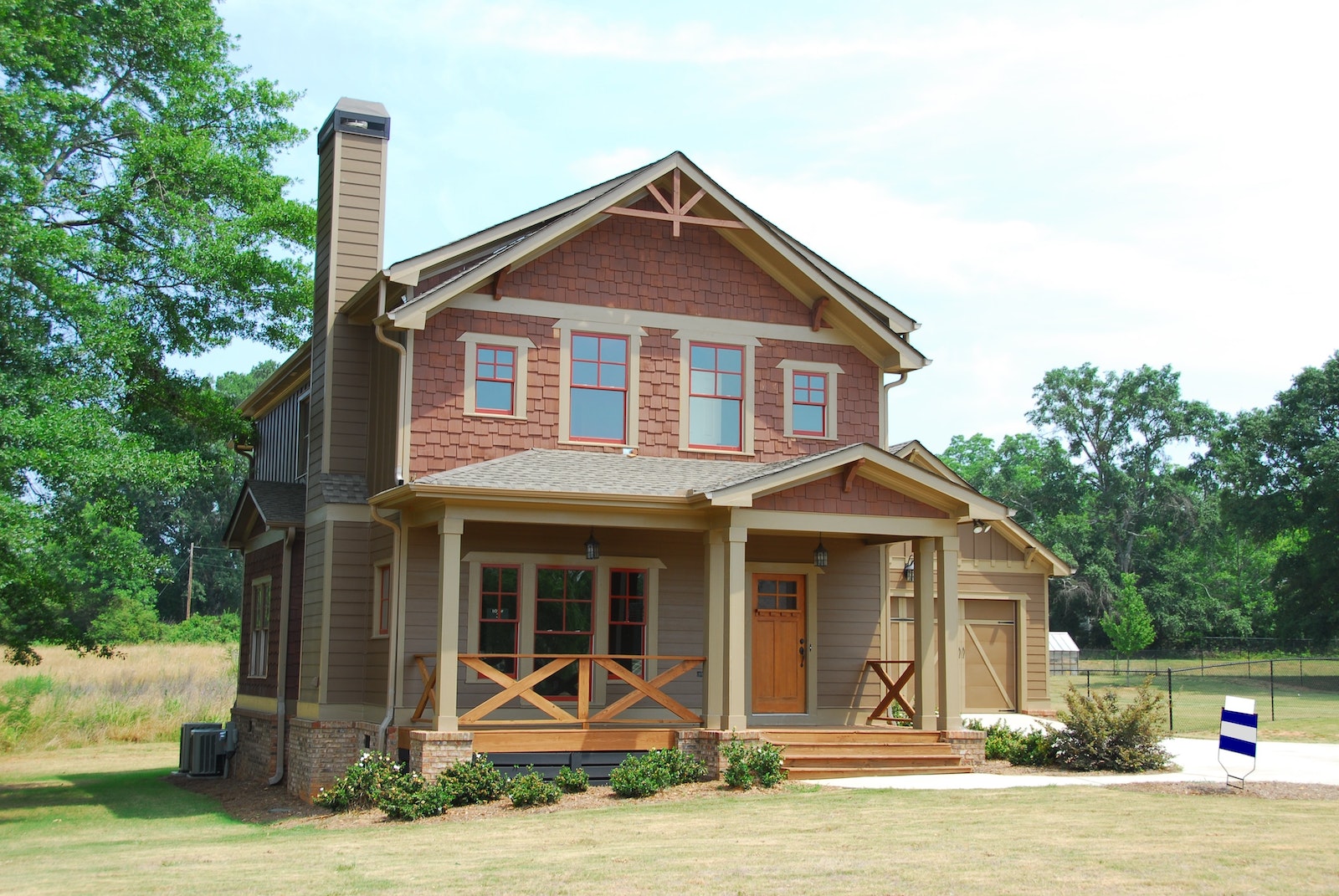To know how big a porch can I build, you can check out the information that we will share, so you have all you need to know. If you’re planning to add a porch to your home or extend an existing one, there are some valuable things you need to know.
Building a new structure can be a challenge if you don’t have all the information necessary, that is why in this guide, we will explain all the issues that can arise and how to deal with them.
How big a porch can I build?
Contents
- 1 How big a porch can I build?
- 2 What are the size limitations for building a porch?
- 3 How do zoning regulations impact porch size?
- 4 Can I build a large porch on a small property?
- 5 What are the setback requirements for porch construction?
- 6 How do design considerations affect porch size?
- 7 Are there weight limitations for porch construction?
- 8 How does porch size impact property value?
- 9 What are the safety concerns when building a large porch?
- 10 How do I calculate the maximum porch size based on zoning regulations?
- 11 How does porch size impact outdoor living and entertainment space?
- 12 Final remarks on how big a porch can I build
The size of the porch you can build depends on various factors, such as your property size, zoning regulations, and building codes.
Local zoning laws and building codes typically regulate the height, size, and setback requirements for porches, so it’s important to research and understand the rules and regulations that apply in your area before beginning a porch building project.
The size of your property can also impact the maximum porch size you can build. A larger property may allow for a larger porch, while a smaller property may have space limitations that impact the size of the porch.
Other factors to consider include the design and materials used for your porch. A more intricate design or higher-end materials may require additional structural support or have weight limitations, which can affect the size of the porch you can build.
In general, it’s recommended to consult with a professional and local authorities to determine the maximum porch size you can build and ensure that your porch meets all zoning and building requirements. By following the guidelines and regulations in your area, you can create a beautiful and functional porch that adds value and livability to your home.
What are the size limitations for building a porch?
The size limitations for building a porch can vary depending on various factors, such as local zoning regulations, building codes, and the size of your property.
Zoning regulations typically set the maximum height, setback requirements, and lot coverage limitations for any type of structure, including porches. Building codes also establish requirements for porch construction, such as minimum beam size, post spacing, and railing height, to ensure safety and structural integrity.
The size of your property can also impact the size limitations for building a porch. A larger property may allow for a larger porch, while a smaller property may have space limitations that affect the size of the porch.
It’s essential to research and understand the regulations and restrictions that apply in your area before beginning a porch building project. Working with a professional and obtaining the necessary permits and approvals can help ensure that your porch meets all local requirements and provides a safe and functional outdoor space.
How do zoning regulations impact porch size?
Zoning regulations can have a significant impact on porch size, as they typically establish the maximum size and height limitations for any type of structure, including porches.
Zoning regulations are local laws that govern land use, construction, and development in specific areas. They are established to ensure that neighborhoods and communities are safe, functional, and aesthetically pleasing.
The specific impact of zoning regulations on porch size can vary depending on the area and the specific regulations in place. For example, some zoning regulations may set limits on the percentage of a property that can be covered by structures, including porches. Other regulations may set specific height or setback requirements for porches.
It’s important to research and understand the zoning regulations that apply in your area before beginning a porch building project.


Can I build a large porch on a small property?
It’s possible to build a large porch on a small property, but there are several factors that need to be considered before beginning a project.
One of the main factors to consider is the size of the property and the space available for the porch. Building a large porch on a small property can make the property feel cramped and overcrowded. Additionally, there may be zoning regulations or building codes that limit the size or height of structures on smaller properties.
Another important factor to consider is the purpose of the porch. A large porch may be desirable for outdoor entertaining or relaxation, but it’s important to ensure that the porch size fits the intended use and doesn’t overwhelm the property or obstruct views.
It’s essential to research and understand the zoning regulations and building codes that apply in your area before beginning a porch building project. Working with a professional and obtaining the necessary permits and approvals can help ensure that your porch meets all local requirements and provides a safe and functional outdoor space that complements your property.
What are the setback requirements for porch construction?
Setback requirements for porch construction refer to the distance that the porch must be set back from the property line, adjacent buildings, and other structures. These setback requirements are typically set by local zoning regulations and building codes and are intended to ensure safety, provide adequate space for emergency vehicles, and maintain the character of the neighborhood.
The specific setback requirements for porch construction can vary depending on the location and the zoning regulations in place. In some areas, setbacks may be measured from the property line, while in other areas, they may be measured from the curb or street. The setback requirements may also vary depending on the height and size of the porch.
It’s important to research and understand the setback requirements that apply in your area before beginning a porch building project. Working with a professional and obtaining the necessary permits and approvals can help ensure that your porch meets all local requirements and provides a safe and functional outdoor space that complies with setback requirements.
How do design considerations affect porch size?
Design considerations can have a significant impact on the size of a porch. The size and layout of the porch will depend on several factors, including the purpose of the porch, the available space, and the overall design of the home.
One of the primary design considerations for porch size is the intended use of the space. A porch designed for outdoor dining or entertaining will likely need to be larger than one designed for relaxation or as an entryway. The size of the porch may also depend on the number of people who will use the space and the amount of furniture or accessories that will be included.
Another important design consideration is the style of the home. A porch should complement the overall style and character of the home and fit seamlessly with the existing architecture. A porch that is too large or too small in relation to the home can look awkward and detract from the overall aesthetic appeal.
Finally, other design considerations such as roof design, materials used, and lighting can also impact the size of the porch. For example, a porch with a pitched roof will likely need to be larger than one with a flat roof in order to accommodate the roof structure.
In summary, design considerations play a crucial role in determining the size of a porch. When planning a porch project, it’s essential to consider the intended use, the available space, and the overall design of the home to create a functional and aesthetically pleasing outdoor space.
Are there weight limitations for porch construction?
Yes, there are weight limitations for porch construction, and these limitations can vary depending on several factors such as the materials used, the size of the porch, and the location of the porch. The weight limit of a porch is an important consideration because it affects the structural integrity of the porch and its ability to support the weight of the people and objects on it.
One of the primary factors that determine the weight limit of a porch is the type of foundation used. A porch that is built on a shallow foundation, such as a concrete slab, will generally have a lower weight limit than one built on a deeper foundation, such as a full basement or a crawlspace.
The materials used in porch construction also play a significant role in determining the weight limit. For example, a porch made of lightweight materials such as wood or vinyl may have a lower weight limit than one made of heavier materials such as concrete or brick.
The size of the porch is also a factor in determining the weight limit. Larger porches with more surface area will need to be able to support more weight, while smaller porches may have a lower weight limit.
Finally, the location of the porch can also impact the weight limit. For example, a porch in an area with high winds or heavy snow loads may need to be designed to withstand greater weight loads.
How does porch size impact property value?
Porch size can have an impact on the property value, and it often depends on the location, the type of porch, and the surrounding neighborhood. In general, a larger porch can increase the property’s appeal, as it provides more outdoor living space and can be a desirable feature for many buyers.
A well-designed porch that is in proportion to the size of the home can add curb appeal and make the property stand out from others in the area. Porches can also add value by extending the living space of the home, providing a space for entertaining, relaxing, or enjoying the view.
However, it’s important to note that the impact of porch size on property value can vary significantly depending on the region and the local real estate market. In some areas, porches may not be as highly valued as in others, and the return on investment may be lower.
Additionally, if the porch is poorly designed or does not match the style of the home, it may have a negative impact on the property’s value. For example, a large, modern porch on a historic home may not be as appealing to buyers as a porch that is more in keeping with the original style of the house.
What are the safety concerns when building a large porch?
When building a large porch, safety concerns must be considered to ensure the well-being of those who will use the space. Here are some of the safety considerations when building a large porch:
Foundation: A large porch requires a strong and stable foundation to support the weight of the structure and people who will use it. A poorly constructed foundation can lead to the porch collapsing, causing injury or damage.
Railings: Railings are a critical safety feature for porches, especially for elevated or multi-story porches. The height, design, and material of the railings must meet local building codes to prevent falls.
Stairs: Porch stairs must be designed to provide safe and easy access to the porch. The steps’ height and width must be consistent, and the risers must be slip-resistant to prevent falls.
Lighting: Adequate lighting is necessary for safety and security. Porches should be well-lit to prevent trips and falls, and exterior lights can deter burglars.
Code compliance: All construction must comply with local building codes to ensure safety. Failure to comply with codes can result in safety hazards, fines, or legal issues.
Weather resistance: Porches must be designed and constructed to withstand the local climate and weather conditions. Porches in areas prone to high winds, hurricanes, or snow loads require special attention to ensure safety.
Material quality: The quality of the materials used in porch construction can impact safety. Using low-quality materials can result in structural weakness, rot, and deterioration over time.
In summary, safety is a critical consideration when building a large porch.
How do I calculate the maximum porch size based on zoning regulations?
Calculating the maximum porch size based on zoning regulations can be a complex process that varies depending on your location and the specific regulations that apply to your property. Here are some general steps that can help you calculate the maximum porch size based on zoning regulations:
Check local zoning regulations: Start by checking your local zoning regulations to determine the setback requirements, lot coverage, height limits, and other zoning regulations that apply to your property. These regulations will help you determine the maximum size of your porch.
Calculate the lot coverage: Lot coverage is the percentage of your property that can be covered by buildings and other structures. To calculate the maximum porch size, you’ll need to determine the lot coverage for your property and subtract the existing coverage from any other buildings or structures. This will give you the maximum area you can use for your porch.
Determine the setback requirements: Setback requirements are the minimum distance your porch must be from your property line, street, or other structures. You’ll need to measure the setback requirements and subtract them from the available area you calculated in step 2. This will give you the maximum area you can use for your porch.
Calculate the maximum porch size: Once you have determined the maximum area you can use for your porch, you can calculate the maximum porch size by multiplying the available area by the maximum height allowed by zoning regulations.
It’s important to note that the specific calculations and requirements for determining the maximum porch size can vary depending on your location and the specific zoning regulations that apply to your property. You may need to consult with a professional, such as an architect or contractor, or your local zoning department to ensure that your porch design complies with all applicable regulations.
How does porch size impact outdoor living and entertainment space?
The size of your porch can have a significant impact on your outdoor living and entertainment space. A larger porch provides more space for outdoor furniture, entertaining guests, and relaxing with family and friends. It can also allow for more diverse use of the space, such as adding a dining area or outdoor kitchen.
A large porch can create an inviting and comfortable atmosphere, providing a seamless transition from indoor to outdoor living. It can enhance the overall aesthetic appeal of your home and increase its value.
However, it’s important to keep in mind that a larger porch may also require more maintenance and upkeep. It can also increase your heating and cooling costs, as more space may need to be heated or cooled to maintain a comfortable temperature. Additionally, a larger porch may require additional landscaping or hardscaping to maintain the overall look and feel of your outdoor space.
Ultimately, the ideal porch size for your outdoor living and entertainment space will depend on your personal preferences, lifestyle, and the available space on your property. When considering the size of your porch, it’s important to also take into account your budget, design preferences, and any local zoning regulations that may impact your plans.
Final remarks on how big a porch can I build
In conclusion, how big a porch can I build depends on various factors, such as your property size, zoning regulations, and building codes. Before embarking on a porch building project, it’s essential to research and understand the regulations and restrictions that apply in your area. By working with a professional and following the guidelines and requirements set forth by local authorities, you can create a beautiful and functional porch that enhances the value and livability of your home.







